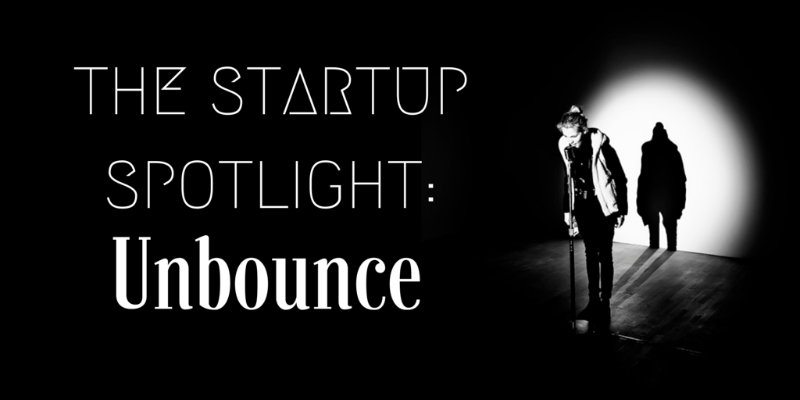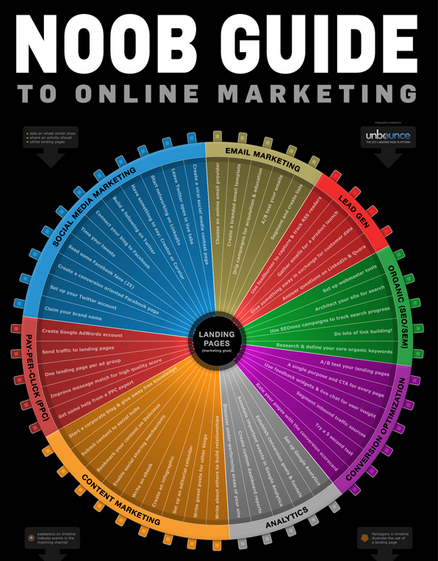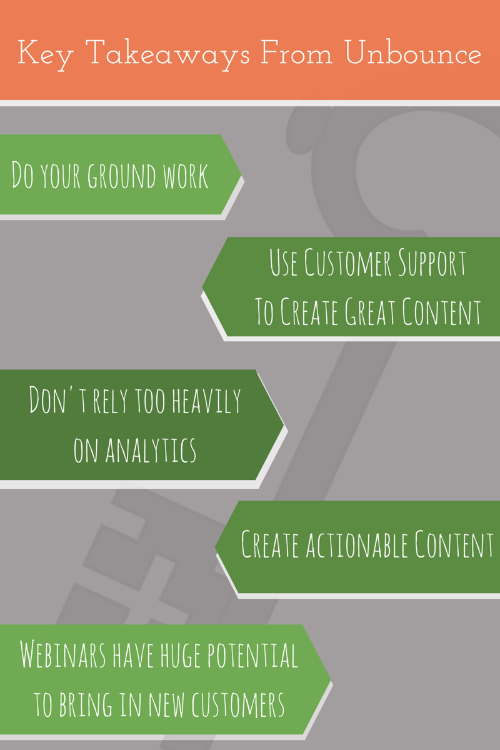Last week we talked to Jimmy Daly from email marketing startup Vero. We got some great insights into what works for them on how they create and spread their content.
This week we’re talking to Unbounce, a landing page service that has been taking the marketing world by storm.
A Little Bit About Unbounce
Unbounce is a landing page service that lets marketers build, publish and test landing pages without the use of IT or software.
From humble beginnings, Unbounce has grown so much so (in 2014 they nearly hit the $7 million dollars in revenue mark) that they’ve practically become a household name for marketers and small businesses alike.
Their incredible rise to success, under the guidance of 6 – yes, you read that correctly, 6 – co-founders has been well documented. And they’ve attributed a huge part of their success to the foundational work that they put into the business before they even launched it.
Firstly, they did a ton of interviews to make sure they were hitting just the right pain point.
We did a lot of interviews of prospective customers and other marketers, to really validate the pain.
Then they turned their attention to content marketing: “We started blogging the same day we started coding” says Perreualt, “by the time we launched, we already had a reputation in the space.” (Groove Interview)
Content Marketing at Unbounce
Unbounce’s blog gets 140,000 unique visitors per month, and is often cited as an integral part of their success. Content marketing, and in particular, the blog, has been a top priority at Unbounce since the company’s launch. Well, actually, about 6 months before its launch.
“At the very beginning, we really relied on our in-house thought leader when it came to landing pages and conversion rate optimization, which was our co-founder Oli Gardner. He was blogging at least once a day in order to make sure all of the content was 100 percent credible and entertaining.”
– Dan Levy, Unbounce Content Strategist
What really helped Unbounce’s blog take off was, according to Oli, one particular post called: The Noob Guide To Online Marketing. Yes, you’ll probably have stumbled across at some point yourself!
The post, which was originally on the (then) SeoMoz blog, broke every Moz record that they had, has been downloaded and viewed as PDF over 100,000 times and has been translated into 12 languages.
And, most importantly, because the full-size version of the infographic was on Unbounce’s website, it drove a ton of traffic back to them.
Once Unbounce began to grow, Oli was able to take a step back, but that didn’t mean the company lost their interest in content marketing. Instead, the company began to grow a content team around the principle of maintaining that same level of credibility, quality and usefulness that they had become so well-known for.
“What we’re trying to do now is to get great writers to basically be conversion beat reporters.”
– Dan Levy, Unbounce Content Strategist
If you hadn’t gathered already, content marketing is a bit of a big deal at Unbounce. So we went ahead and asked Director of Marketing at Unbounce, Georgiana Laudi, a few more questions.
How do you decide what content to create? Do you have a methodology?
“We spend as much time as possible trying to understand our customers, so regular communication between Marketing and Customer Support is super important,” says Georgiana. “The people who are on the phones with your customers, know them better than anyone. They should be your first stop when defining your content’s objectives.”
Customer-centricity isn’t anything new, but Unbounce consistently takes it to another level.
“A few years ago, we took it a step further. Myself, our Co-Founder & Director of Product, Carter Gilchrist, and our Director of Customer Success, Ryan Engley, locked ourselves in a room for a day and emerged with Unbounce’s customer lifecycle. Through that process it became crystal clear who we should be talking to and why.”
So it’s not just about keeping the customer in mind, advice we’re all guilty of throwing around with little-to-no thought. What Unbounce have done is literally create a strategy from the customer up. This isn’t just about haphazardly thinking about your customer – this is a strategic way of never being ever able to avoid thinking about them.
Do you use analytics of any kind to determine what you write about? Or do you focus on answering user questions? Or do you just write what you feel like?
“Analytics is an important part of the process of course, but if you aren’t focused on providing value to readers as people first, metrics can easily mislead you. A good content strategy doesn’t necessarily target the customer you have, but the customer you want.”
Interestingly, analytics don’t seem to be the focus of this conversion-mad company. Why? Because it only tells part of the story. You should treat data like data, but people are people and no amount of analytics will tell you how to talk to your audience. But, like Georgiana implies, it is useful… as a guiding post.
What kind of content has performed the best for you? How did you know to create it? Did you have a master plan, or did the stars align?
“The kind of content that has performed the best for us is the kind of content that gets people excited to act. Moreover, the right people to act. We field topic ideas from our customers, but one of the requirements of all of our content, no matter the topic, is that it be actionable, i.e. Can a marketer put this learning into action immediately?”
And to just give you an idea of what Georgiana means by actionable, here are some examples via Unbounce:
What content channel has performed the best for Unbounce?
Our Unwebinars were definitely a runaway success for us. They became our number one acquisition channel within 4 months of introducing them to our mix. At the time, more than our blog, our ecourses, and our ebooks — combined. I believe they were successful because we were able to breathe new life into a overused and tired channel. Being super strategic about it doesn’t hurt either.”
In 2013, Unbounce held a webinar once every month, and those webinars became a runaway success, making them their #1 acquisition channel. You can hear about Unbounce’s webinar process from Georgiana in their hour-long webinar that is definitely worth a look if you’re thinking of running your own.
And finally, tell us what part of your job do you dread & love the most?
According to Georgiana, the worst part of her job is “missing an opportunity” and it’s “the details and exceeding expectations” that makes her day! I think I can agree with that sentiment!
Key Takeaways From Unbounce
- Do your groundwork
- Use your customer support team to field topic ideas for you content
- Don’t rely too heavily on analytics
- Create super actionable content
- Webinars have huge potential to bring in new customers
Liked this?
 Well, we've plenty more where that came from! Subscribe to our newsletter to get great tips, tricks and information on all things inbound marketing!
Well, we've plenty more where that came from! Subscribe to our newsletter to get great tips, tricks and information on all things inbound marketing!
If you’d like your business featured in our startup spotlight series, please send me an email at [Sarah at getspokal dot com] with the subject line “Inquiry About Startup Spotlight Series”.




